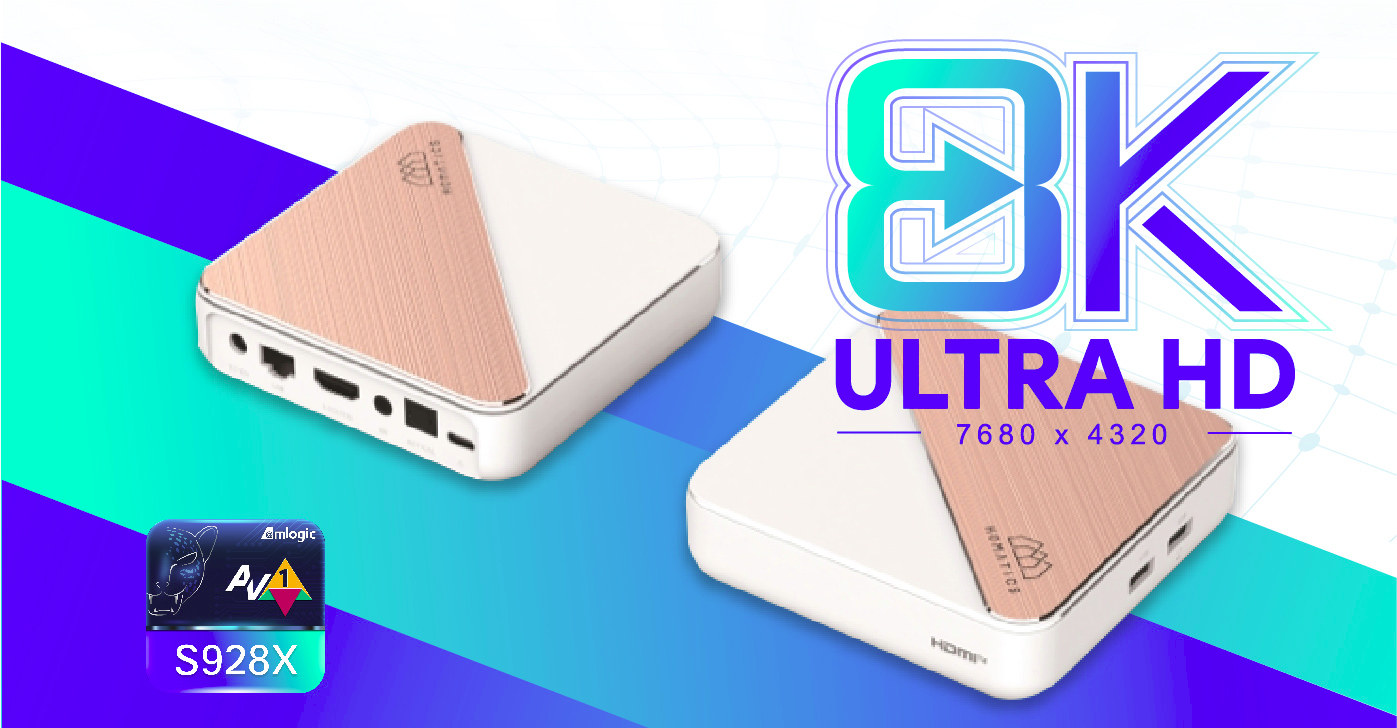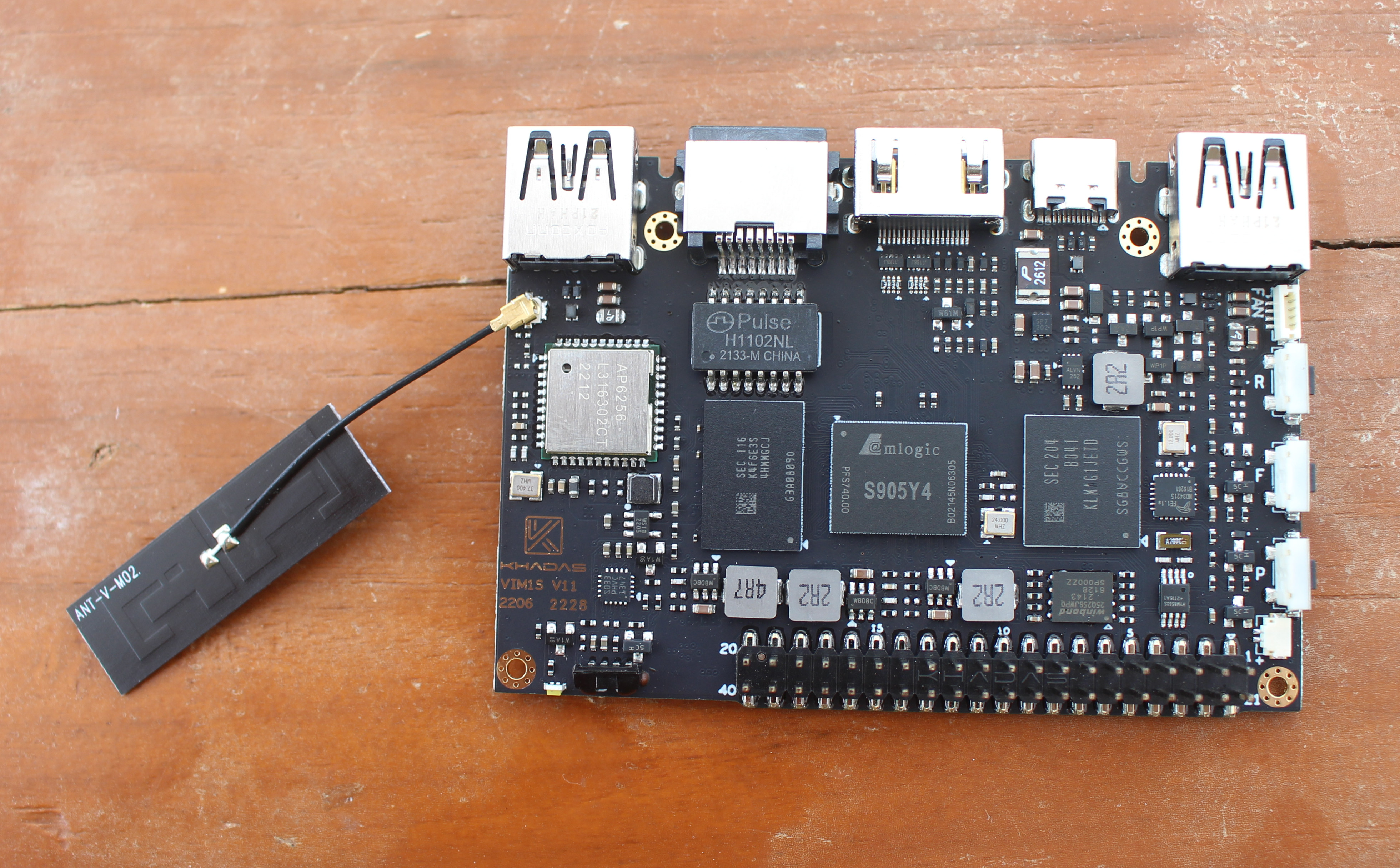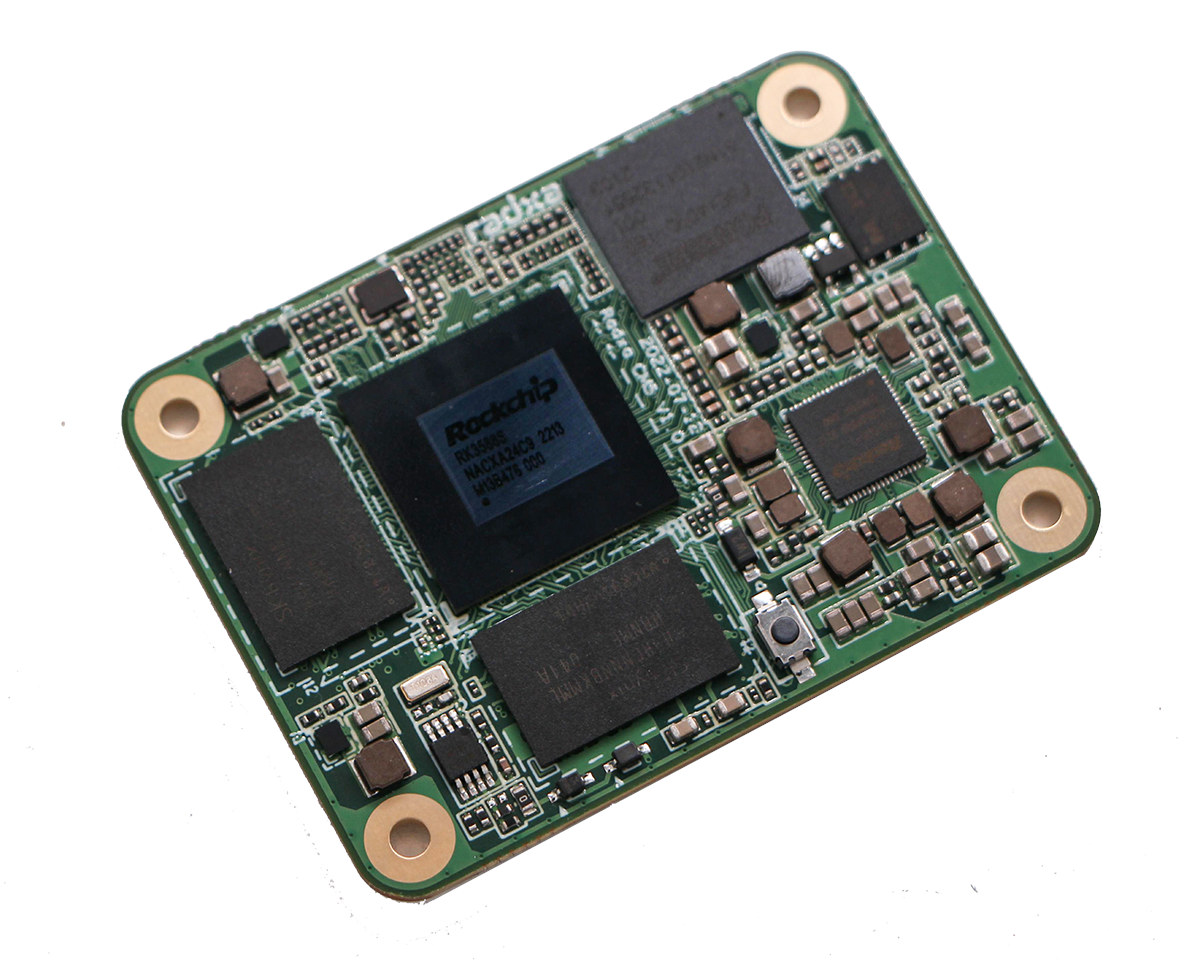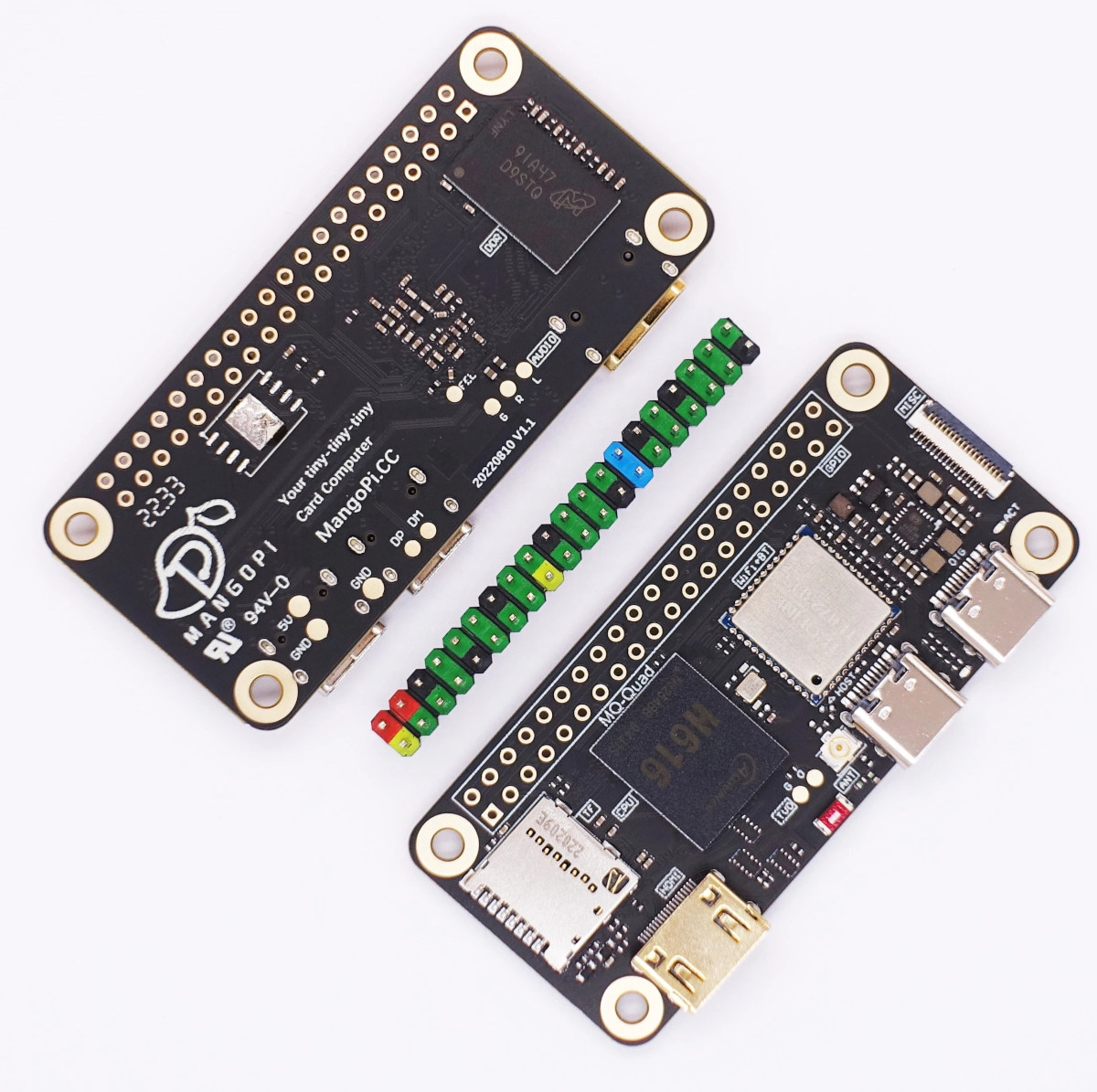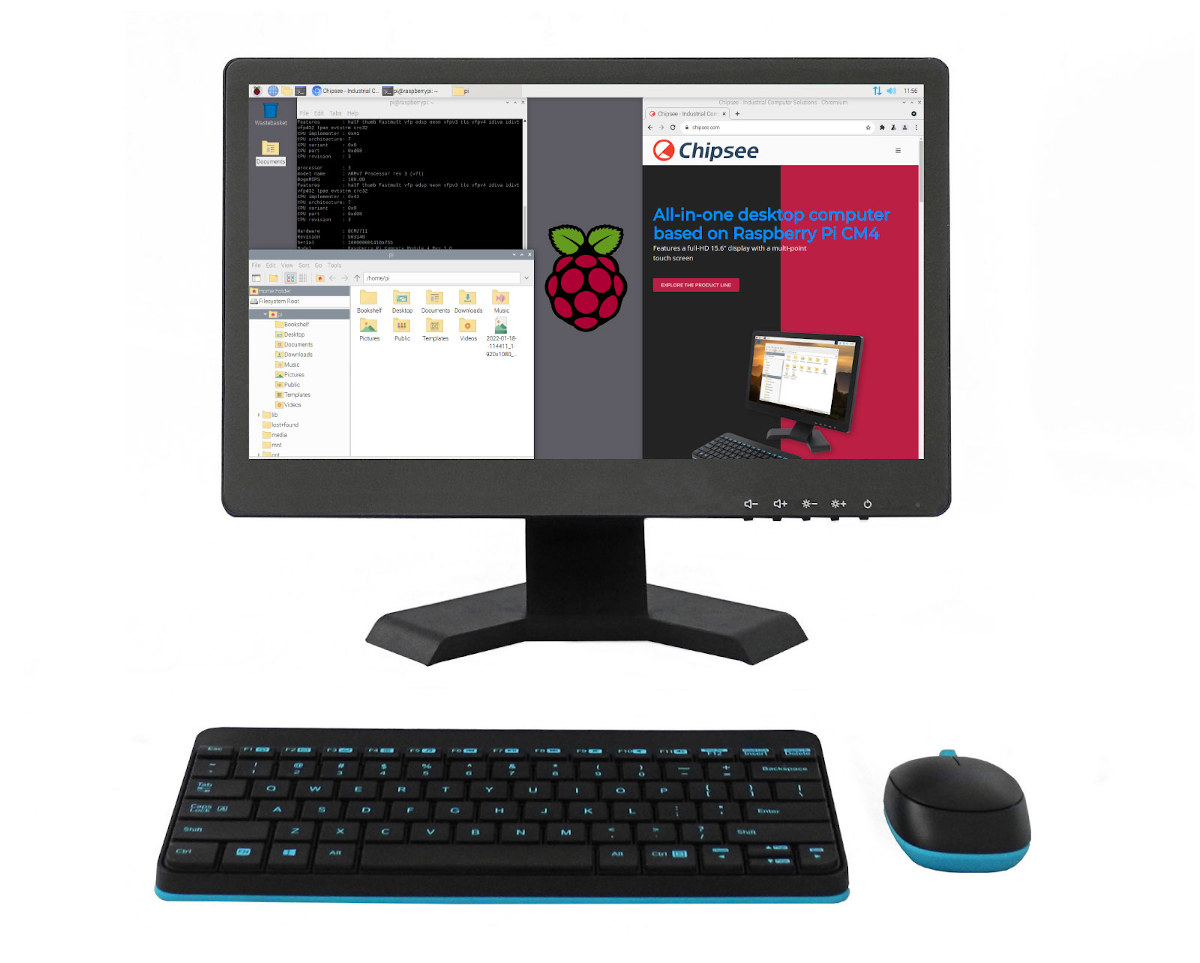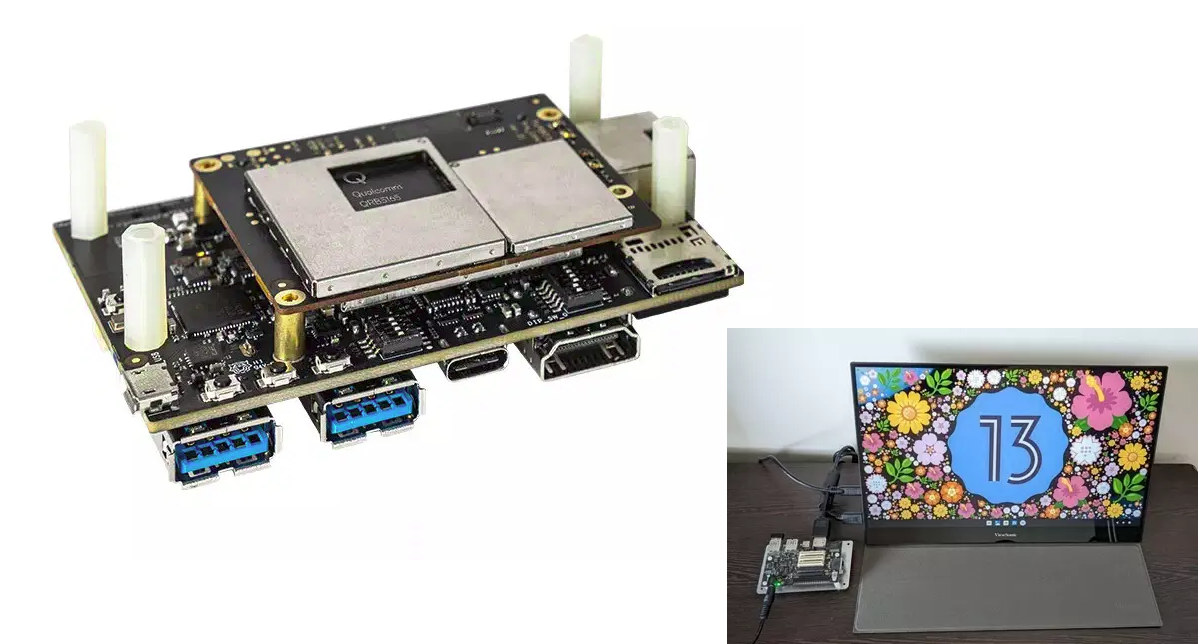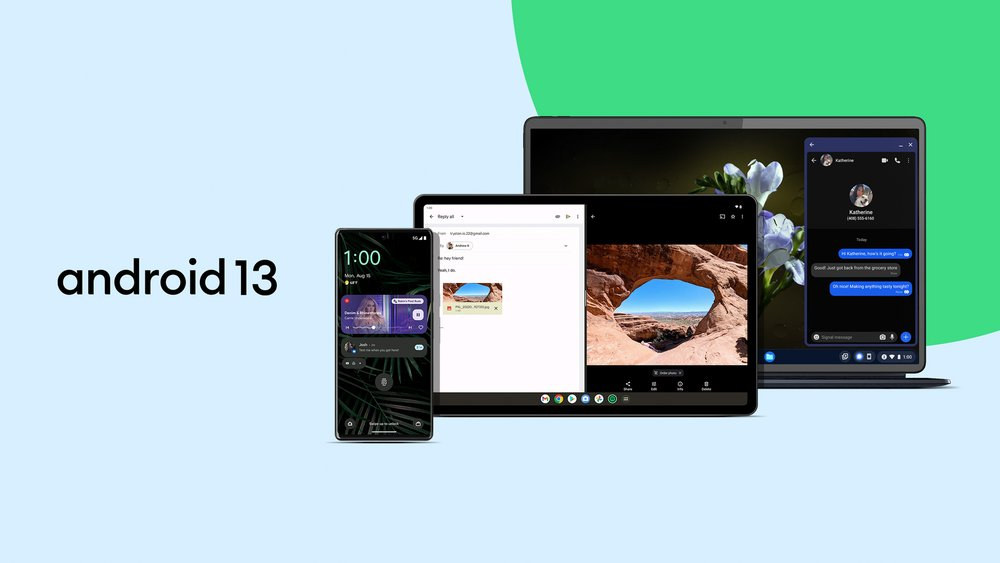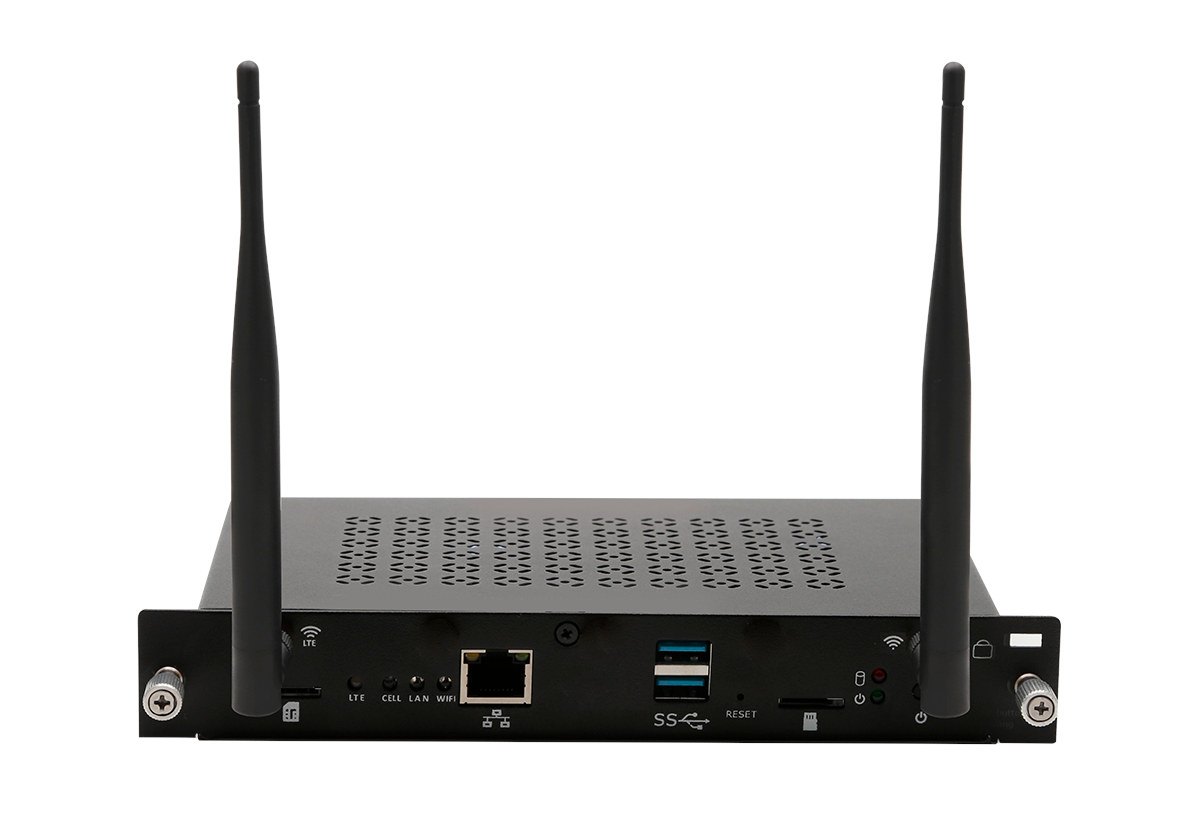Amlogic S928X multi-core Cortex-A76/A55 8K media processor, which may have been initially known as S908X, is being showcased at ICB2022 in Amsterdam in the “SEI 8K Box” developed by SEI Robotics. Amlogic S908X/S928X was first discovered in a roadmap in 2019 and was expected to launch by the end of 2020 at the time. But after a long wait of nearly three years, the Amlogic S928X processor is finally showing in SEI 8K box with an HDMI 2.1a 8K video interface, supports for HDR and advanced audio codecs like Dolby Atmos and DTS, and support for Smart Home functions through an IoT module with WiFi 6E, Zigbee and more. SEI 8K box preliminary specifications: SoC – Amlogic S928X multi-core Cortex-A76/A55 processor, next-gen GPU (likely Mali-G610?); 12nm process System Memory – 64-bit DDR Storage – eMMC flash Video Output HDMI 2.1a up to 8Kp60 (7680 x 4320 resolution) with HDR10+/HLS, Dolby […]
Khadas VIM1S low-profile SBC features Amlogic S905Y4 quad-core Cortex-A35 SoC
Khadas VIM1S is an upcoming low-profile single board computer powered by an Amlogic S905Y4 quad-core Cortex-A35 processor that’s meant to provide an upgrade to the Amlogic S905X-powered Khadas VIM SBC introduced in 2016, and since then renamed to Khadas VIM1. Khadas has been teasing two new SBCs: the low-end Khadas VIM1S with S905Y4 SoC, and the most powerful Khadas Edge2 board equipped with a Rockchip RK3588S octa-core Cortex-A76/A55 processor. I have received both as you can clearly see from the photo above :), but I’m only allowed to write about information available publicly at this time, so today I’ll introduce the Khadas VIM1S which looks just like the VIM1 board. Khadas VIM1S specifications with highlights in bold showing the differences against the VIM1 Pro model: SoC – Amlogic S905Y4 quad-core Arm Cortex-A35 @ up to 2.0 GHz (real frequency) with Arm Mali-G31 MP2 GPU @ up to 850 MHz MCU – […]
Radxa CM5 – A Rockchip RK3588S module (somewhat) compatible with Raspberry Pi CM4
Radxa has been working on the ROCK 5 Compute Module (aka Radxa CM5) system-on-module compatible with Raspberry Pi CM4, but based on the more powerful Rockchip RK3588S octa-core Cortex-A76/A55 SoC. Just like the Raspberry Pi Compute Module 4, it comes in a 55 x 40mm form factor, but instead of just two high-density 100-pin board-to-board connectors, the module includes three to cater for the additional I/Os from the Rockchip processor, just like they did for the Radxa CM3 equipped with a Rockchip RK3566 processor. Radxa CM5 specifications: SoC – Rockchip RK3588S octa-core processor with 4x Cortex‑A76 cores @ up to 2.4GHz, 4x Cortex‑A55 core @ 1.8GHz Arm Mali-G610 MP4 “Odin” GPU Video decoder – 8Kp60 H.265, VP9, AVS2, 8Kp30 H.264 AVC/MVC, 4Kp60 AV1, 1080p60 MPEG-2/-1, VC-1, VP8 Video encoder – 8Kp30 H.265/H.264 video encoder 6 TOPS NPU System Memory – 4GB, 8GB, or 16GB LPDDR4x‑4224 SDRAM Storage – Optional 8GB, […]
MangoPi MQ Quad SBC – Allwinner H616 meets Raspberry Pi Zero W form factor
MangoPi MQ Quad is an Allwinner H616 quad-core Arm Cortex-A53 SBC following Raspberry Pi Zero W form factor, and the company’s earlier MangoPi MQ Pro RISC-V SBC featuring the Allwinner D1 processor. The MangoPi MQ Quad also comes with 1GB RAM, a mini HDMI output, two USB Type-C ports, WiFI 4 and Bluetooth connectivity, a microSD card, as well a 40-pin Raspberry Pi-compatible GPIO header and an FPC connector with USB, Ethernet, and more GPIOs for expansion. MangoPi MQ Quad specifications: SoC – Allwinner H616 quad-core Cortex-A53 @ 1.5GHz with Mali-G31 MP2 GPU with OpenGL 3.2, Vulkan 1.1, OpenCL 2.0 API support System Memory – 1GB DDR3L Storage – MicroSD card slot, a footprint for SPI flash (on the bottom of the board) Video Output – Mini HDMI 2.0 port up to 4Kp60 Connectivity – 802.11 b/g/n WiFi 4 and Bluetooth 4.2 via RTL8723DS; ceramic and u.FL antennas included USB […]
Chipsee AIO-CM4-156 – A 15.6-inch industrial All-in-One computer with Raspberry Pi CM4
Chipsee AIO-CM4-156 is an industrial All-in-One computer powered by a Raspberry Pi CM4 module and equipped with a 15.6-inch capacitive touchscreen display with 1920×1080 resolution. The new panel PC builds upon the earlier AIO-CM4-101 model with a 10.1-inch touchscreen display and besides the larger and higher resolution 15.6-inch Full HD display, it also adds support for an optional 250GB Sandisk NVMe SSD and a 2mm protective “armoplated” Glass. Since as far as I know, “armoplated” is not a word, they may refer to armored/toughened glass instead. AIO-CM4-156 specifications: SoM – Raspberry Pi CM4 with Broadcom BCM2711 quad-core Cortex-A72 processor at 1.5 GHz, up to 8GB RAM, up to 32GB eMMC flash Storage MicroSD card slot for boot (only used with CM4 Lite) M.2 NVMe socket for an optional 250GB SSD drive Display – 15.6-inch IPS LCD with 1920×1080 resolution, optional 10-point capacitive touchscreen, 250 cd/m2 brightness, 2mm protective armored glass […]
Android 13 is already working on Qualcomm Robotics RB3 and RB5 platforms
Qualcomm Robotics RB3 (aka DragonBoard 845c) and Robotics RB5 boards can already support Android 13, just a few days after the source code was pushed to AOSP (Android Open Source Project). Once upon a time (i.e. a few years ago), it would have taken weeks, and more likely months, to port the latest version of Android (AOSP) to a specific single board computer. But thanks to initiatives such as Project Treble, Android reference boards such as DragonBoard 845c (RB3), HiKey 960, Khadas VIM3, and Qualcomm Robotics Board RB5 can now get the latest version of Android up and running in a matter of days. Android 13 was released on August 15, and Linaro wrote about RB3 and RB5 support on August 18, and while Linaro engineers collaborated with Google engineers before the AOSP, it is still an impressive feat. Amit Pundir, Linaro Engineer, explains how this was made possible: Over […]
Android 13 released, source code pushed to AOSP
Android 13 has just been released rolling out to Google Pixel devices initially, and later to other devices from Samsung Galaxy, Asus, HMD (Nokia phones), iQOO, Motorola, OnePlus, Oppo, Realme, Sharp, Sony, Tecno, vivo, Xiaomi and more. Google also pushed Android 13 source code to AOSP (The Android Open Source Project). Most of the changes to the new version of the Android operating system were introduced with the first Android 13 developer preview – released in February 2022 – adding privacy, security, and productivity improvements, and even some hidden gems such as virtualization enabling Pixel 6 to run Linux and Windows 11, although the feature was mostly implemented for security reasons and running third-party code such as DRM or crypto outside of the Android OS. Other notable features added since then include Spatial Audio on headphones that enable head tracking, Bluetooth LE audio support, HDR video support on third-party camera […]
OPS-compliant digital signage player features Amlogic S905X3 CPU (Sponsored)
DataMax DM29 is a digital signage player and mini PC compliant with the OPS (Open Pluggable Specification) standard and powered by an Amlogic S905X3 quad-core Cortex-A55 processor coupled with 4GB RAM and 32GB internal storage. The Android 9 system also features an HDMI 2.1 port capable of up to 4Kp60 video output, Gigabit Ethernet, dual-band WiFi, and 3G or 4G LTE cellular connectivity, as well as a pair of USB 3.0 ports. The system can be powered from an OPS-compliant display or via PoE. DataMax DM29 specifications: SoC – Amlogic S905X3 quad-core Arm Cortex-A55 processor @ up to 1.9 GHz with Arm Mali-G31 MP2 GPU supporting OpenGL ES 3.2, Vulkan 1.0, OpenCL 2.0 System Memory – 4GB dual-channel LPDDR4 or DDR3 Storage – 32GB eMMC flash, microSD card socket, M.2 SSD socket Video & audio output – HDMI 2.1 up to 1080p120 or 4Kp60 Video Decoding – 10-bit H.265, VP9, […]


